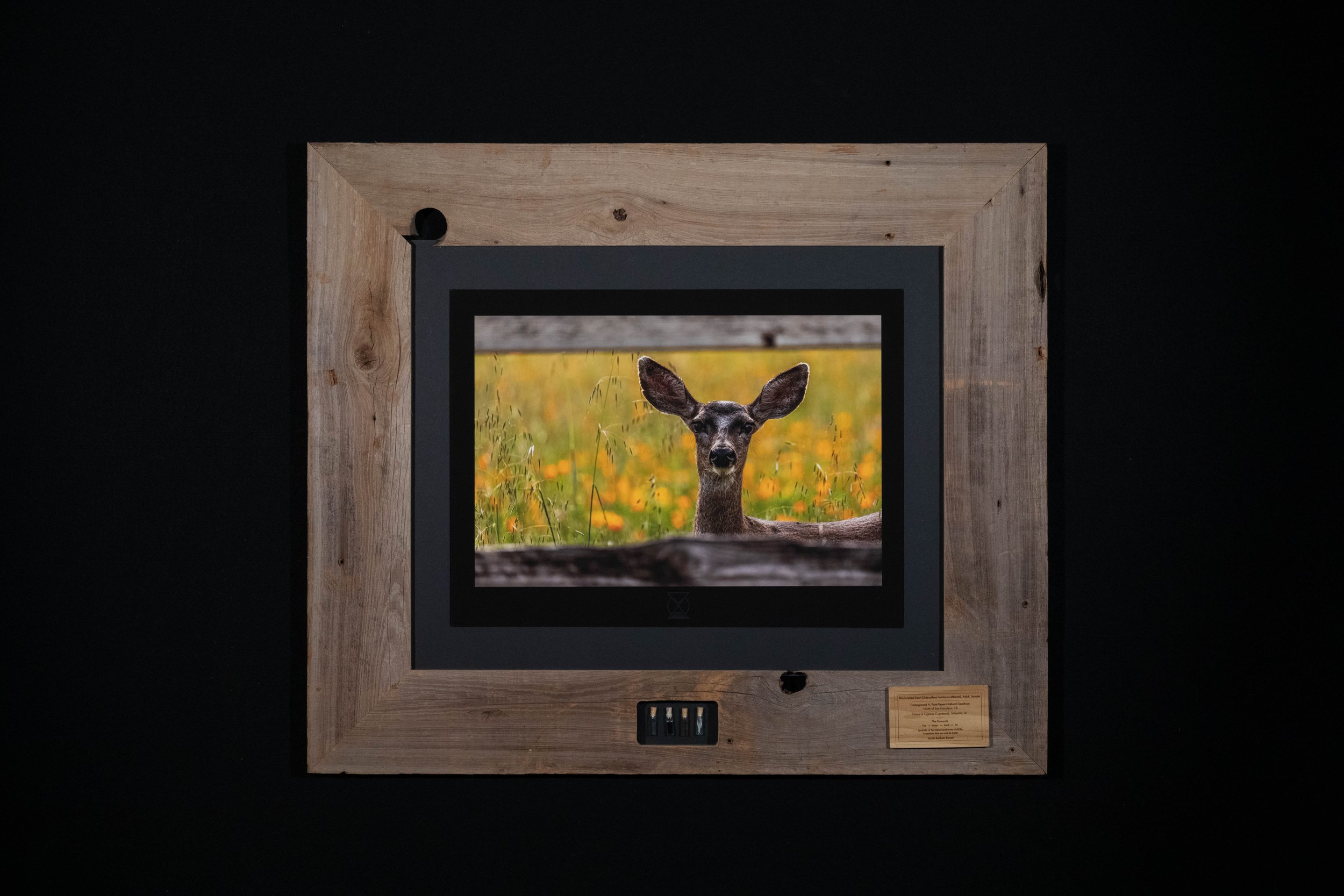Black-tailed Deer - Point Reyes National Seashore, CA




Black-tailed Deer - Point Reyes National Seashore, CA
Black-tailed Deer (Odocoileus hemionus columbianus), Adult, Female
Pulling into the parking lot of the office of the Point Reyes National Seashore Preserve in California, this Deer popped its head up from behind the fence and looked right at me. I couldn’t help but immediately stop and get out my camera, quickly but slowly, to take a picture with the beautiful California Poppies in the background. This photo was taken 4/30/12 at 4:05 pm.
WeForest Donation: $320 (What is this?)
Print Number: 1/3
Print Size: 15 x 22.5
Total Dimensions: 35 x 41
Hanging equipment and certificate of authenticity included.
PHOTOGRAPH
Black-tailed Deer (Odocoileus hemionus columbianus)
Common throughout the Pacific Northwest of the United States, the Black-tailed Deer and its very close cousin, the Columbian Black-tailed Deer, are subspecies of the Mule Deer. The easiest way to tell them apart from the more common, Mule Deer, is their namesake. Although Mule Deer do have a black-tipped tail, the Black-tail Deer has a fully black, and very distinctive tail. We all know deer the be grazers, usually to the point of destroying our gardens or plants we most love in our front yards. One beautiful part of their diet though is the Black-tailed Deers desire to eat western poison oak. A nuisance to say the least for humans, it seems to not at all bother the deer, and for that I say thank you.
LOCATION
Point Reyes National Seashore, San Fransisco, CA
Point Reyes National Seashore is a 71,000 acre preserve, located just north of San Fransisco in Northern California. Established in 1962, it houses 45% of all species of North American birds, including the threatened, Western Snowy Plover, many Raptors, and other shorebirds. Quite regularly seen Tule Elk also call the peninsula home after having been reintroduced to the area in 1978. They were eliminated from the area around the turn of the 19th century. The tip of the Preserve is home to a lighthouse and is an especially good place for animal lovers to visit. Whale watching is a common activity during the migration of Gray Whales from this point and Elephant Seals can be seen in droves throughout the year. Certain parts of the National Seashore are actually closed for parts of the year to protect the seal pups born there.
FRAME
Bald Cypress (Taxodium distichum)
Bald Cypress, the giant of the swamp, is a stately, slow growing native of the southeastern United States. Very tough it can adapt to thrive in a wide range of soils, including very briny, salty, and water soaked areas. Able to grow very tall, it has great stability at its base thanks to its “knees.” The tallest known Cypress was about 145 feet tall. All of the Bald Cypress I have used in my frames has come from different parts of Louisiana.
THE ELEMENTS
Fire, Water, Earth, and Air
In the display case in the bottom of the frame, four items are preserved glass vials. The items represent the elements: fire (wood charcoal), water (mineral oil), earth (soil), and air (a milkweed seed). I include these items in my work as a symbol of the interconnectedness of all life on earth, and as a reminder that humans must do better.
The Plaque
I engrave a wooden information plaque for each work. The plaque includes what the photograph is of, the location of the photograph, what type of wood the frame is made of and where I got the wood from. The plaques also explain what the vials are in each display case, and even state the meaning of my logo. The plaques are attached magnetically and can be removed to read or to store on the back of each frame if you prefer not to have it displayed on the front.

